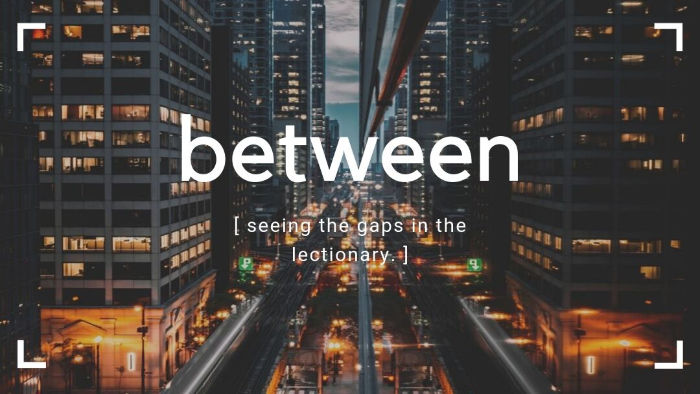A look at the gaps in the lectionary.
This week: the gap between Easter 2B and 3B
The text: Luke 24.1-35
For this third Sunday of Easter, we move to the gospel of Luke for another resurrection appearance. This one reads almost like a retelling of last week’s—though it clearly isn’t.
The story the lectionary crafts for Easter begins at the empty tomb on Easter Day, moves to the Upper Room where Jesus appears to the disciples in John, and then he appears to them again in Luke.
Of course, it isn’t really again. Nor is it a retelling. Astute followers will understand it as an alternative. But even this seems like a strange way of dealing with the experience of moving to a whole other book.
For our purposes today, however, let’s focus purely on what we missed by reading John the last two weeks rather than Luke.
The Walk and Talk
On the same day as the resurrection, two of the disciples walk the road to Emmaus. There they meet a stranger who knew nothing of the recent events—or does he?
The stranger, of course, is Jesus, who makes himself “known to them in the breaking of the bread.”
This encounter sets up our reading for this Sunday in a few key ways. But I think it does something even more important. It recasts our vision of Easter from a story focused only on Jesus to one that is about the whole team.
This story centers on people sharing their belief. This, of course, is how the walk to Emmaus is used. It is a favorite when discussing evangelism or discipleship. But it also reinforces the resurrection itself. Because it isn’t only that God did this thing. It is that God did this thing with humanity.
In appearing to the two disciples like a stranger, Jesus invites these two unnamed followers to do something with what they learned. They are able to turn a moment of grief and confusion into a time to exercise belief.
This, too, should make the great reveal at the end all the more clear. That when the stranger teaches them, then stays with them, eats with them, they recognize Jesus there.
It isn’t only teaching. And it isn’t only communion. It is this guerrilla liturgical moment of being disciples and apostles—learning from and being with Jesus—and sharing and hoping in the resurrection in spite of their own doubts and conflicting beliefs. They continue to participate in a form of worship.
Disappearing and Appearing
Jesus disappears in the midst of the Eucharistic feasting and the two disciples discuss the experience:
“Were not our hearts burning within us while he was talking to us on the road, while he was opening the scriptures to us?”
Notice that he appears in the breaking of the bread, but the heartwarming happened in the exploration of Scripture!
I find this challenges both evangelical and liturgical types. Many of us want to focus on the eucharistic element itself. And many others want to see a particular revealed truth of scripture that conveniently matches fundamentalist interpretation.
Neither truly satisfies the generous experience of these two disciples—transformed, not by certainty in a singular “right” answer or in the breaking bread alone, but in the warming experience of finding the Christ motivation in Scripture: that God invites us into the Christ project through love.
And the pair contribute to the project when they get there—meeting up with the other disciples. They share their experience and contribute another witness to the love of Christ.
